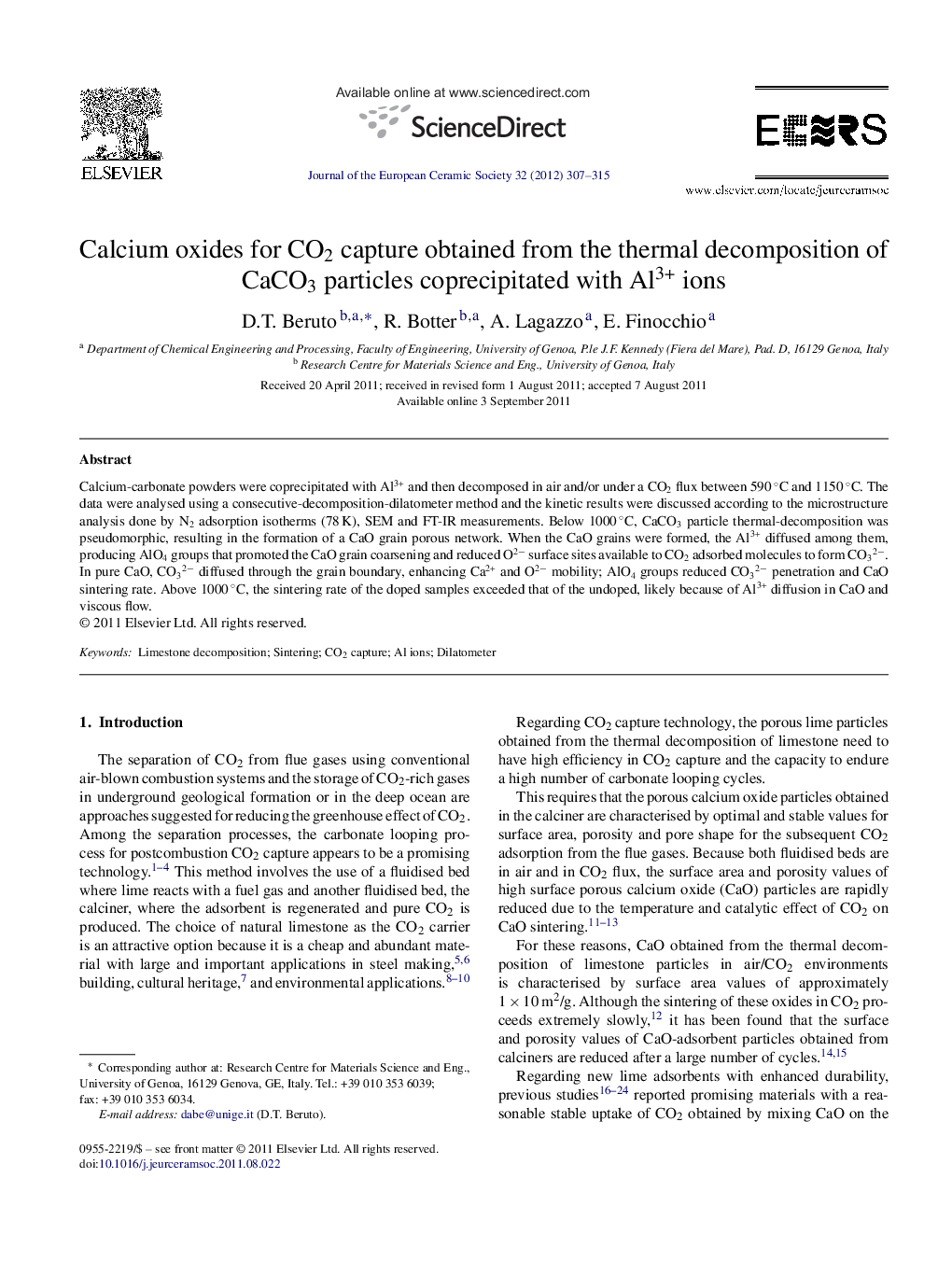| Article ID | Journal | Published Year | Pages | File Type |
|---|---|---|---|---|
| 1474818 | Journal of the European Ceramic Society | 2012 | 9 Pages |
Calcium-carbonate powders were coprecipitated with Al3+ and then decomposed in air and/or under a CO2 flux between 590 °C and 1150 °C. The data were analysed using a consecutive-decomposition-dilatometer method and the kinetic results were discussed according to the microstructure analysis done by N2 adsorption isotherms (78 K), SEM and FT-IR measurements. Below 1000 °C, CaCO3 particle thermal-decomposition was pseudomorphic, resulting in the formation of a CaO grain porous network. When the CaO grains were formed, the Al3+ diffused among them, producing AlO4 groups that promoted the CaO grain coarsening and reduced O2− surface sites available to CO2 adsorbed molecules to form CO32−. In pure CaO, CO32− diffused through the grain boundary, enhancing Ca2+ and O2− mobility; AlO4 groups reduced CO32− penetration and CaO sintering rate. Above 1000 °C, the sintering rate of the doped samples exceeded that of the undoped, likely because of Al3+ diffusion in CaO and viscous flow.
